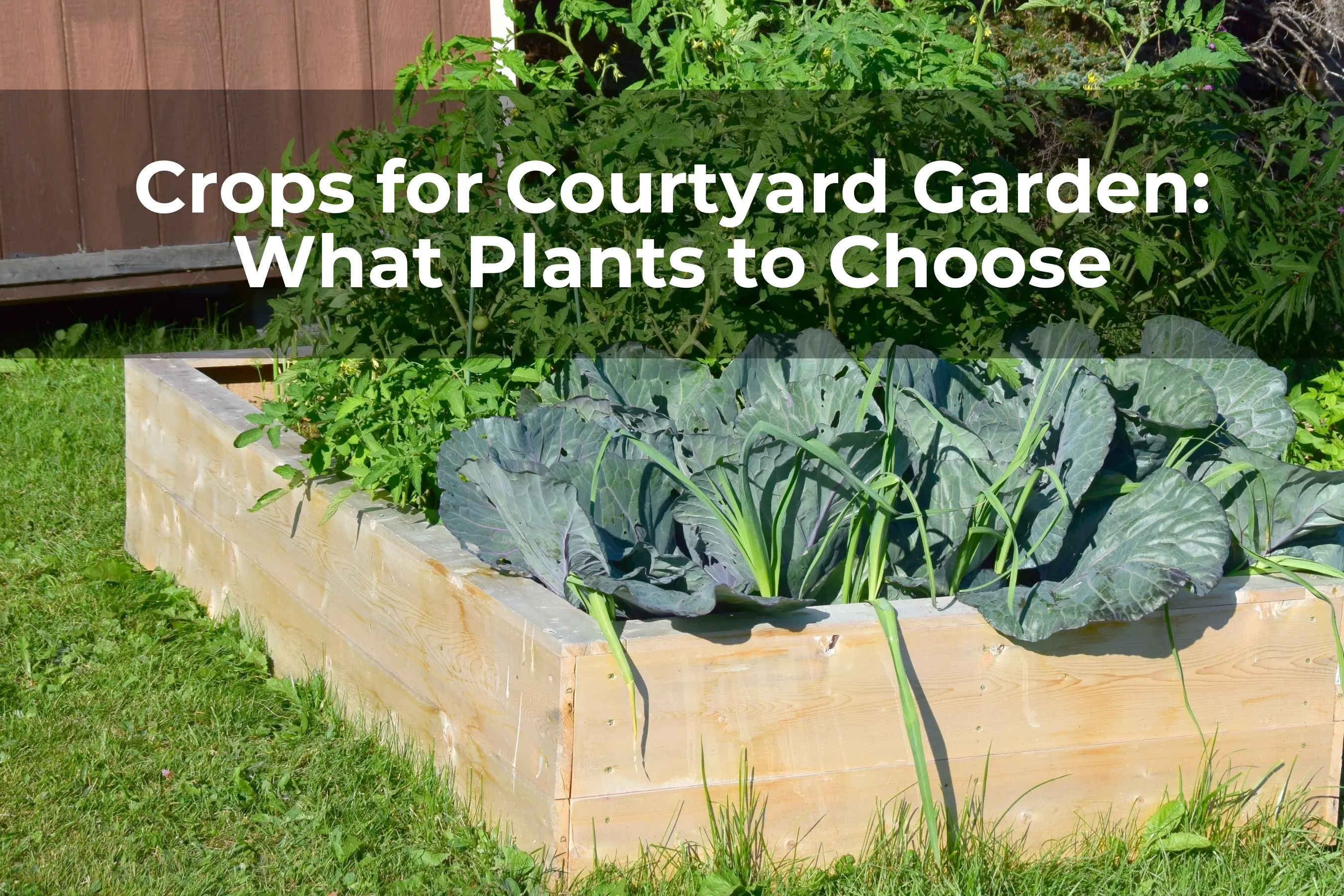Last Updated on April 4, 2024 by Real Men Sow
You can grow crops for the courtyard garden, small balconies, rooftops, patios, or balconies. Maybe they are herbs and vegetables using a mini-raised or shallow bed or even in container pots. Check your ideas first with a contractor or structural engineer to ensure that your spaces – courtyard, balcony, or house roof—are waterproof. A raised bed is an unsupported rectangular box or square frame constructed of planks. Garden centres often sell lightweight raised bed kits. Flexible bag planters are also available.
To prevent the potting mixture from sitting on your courtyard, roof or balcony, place landscape fabric underneath your raised bed. Most raised bed gardening kits come with materials like feet and wire mesh panels. Place the landscape fabric under the mesh to raise the bed from the ground.
Lightweight potting mixes are best for roof-top and balcony beds. To keep the soil fertile, add worm castings or well-rotted compost once or twice per year.
Here are the Best Suitable Crops for the Courtyard Garden:
1. Fruits
- Tomatoes—bush, determinate, miniature, tumbling and vining
- Strawberries
- Melons,
- Currants—red, white, and black
- Blueberries, Raspberries
2. Vegetables
- Beets
- Carrots
- Potatoes
- Corn
- Rhubarb
- Beans–bush beans, climbing pole beans, and runner beans
- Carrots
- Peas
- Radishes
- Spinach,
- Zucchini
- Pumpkins
- Cabbage
- Chard
- Cucumber
- Eggplant
- Fava beans
- Kale
- Parsnips
- Squash
- Turnips
- Florence fennel
- Lettuce and other greens
3. Herbs
- Leeks
- basil
- chives
- cilantro
- dill
- oregano
- mint
- thyme
- rosemary
- sage
- tarragon
- parsley
4. Spices
- Peppers—bell peppers and chiles
- Garlic
- Onions
- shallots
5. Microgreens
- Asian greens—mizuna, mibuna, tatsoi
Tips for Growing Crops for the Courtyard Garden
1. Plan your courtyard garden space.
Decide what crops you want to grow and map out where they will go. Make sure to leave enough space between each plant to allow for proper growth.
Crop rotation is a key element in keeping your courtyard garden healthy and productive. Companion planting is also important in a courtyard garden, as it can help to deter pests and improve yields. Some good crops for a courtyard garden include tomatoes, peppers, eggplants, beans, and herbs.
2. Choose the right crops for the courtyard garden.
Not all plants are created equal and some will naturally take up more space than others. Do your research on the types of plants you want to include in your garden and make sure they will have enough room to grow.
It is important to choose varieties that are well-suited to your climate and growing conditions. Tomatoes and peppers are typically started from seedlings, while eggplants and beans can be direct-seeded.
3. Consider the sun.
Different plants need different amounts of sunlight, so make sure to do your research before planting. The amount of light a plant needs depends on the type of plant. Some plants need full sun, which means they need direct sunlight for most of the day. Other plants need partial sun, which means they need direct sunlight for part of the day.
4. Make sure your plants have enough water.
Again, different plants have different water needs, so make sure to factor that in when you’re planning your garden. It is important to water your crops regularly, especially during hot, dry periods. Fertilizing with a balanced organic fertilizer can also help to keep your plants healthy and productive.
Growing Crops for the Courtyard Garden Interesting Statistics
1. The average size of a courtyard garden is 400 square feet.
2. The average amount of sunlight courtyard gardens receive is 6 hours per day.
3. The most popular crops for gardens in courtyards are tomatoes, peppers, and herbs.
4. The average yield for a tomato plant is 10-12 pounds.
5. The average yield for a pepper plant is 2-3 pounds.
6. The average yield for a herb plant is 1/2 ounce.
Conclusion
By adding crops for the courtyard garden, you can take in the fresh air and sunlight and, of course, grow your favourite crops. It’s a delight to sit on the porch or sit in one of your chairs outside, cold juice on the table, even on a dreary day, and watch your crops grow thanks to you. And once harvest time has come, you’ll be free from worrying about anything else. You just collect your product and start over again because it’s a never-ending cycle, growing different types of fruits and vegetables each year. You might add flowers or even trees in the future. Who knows?


